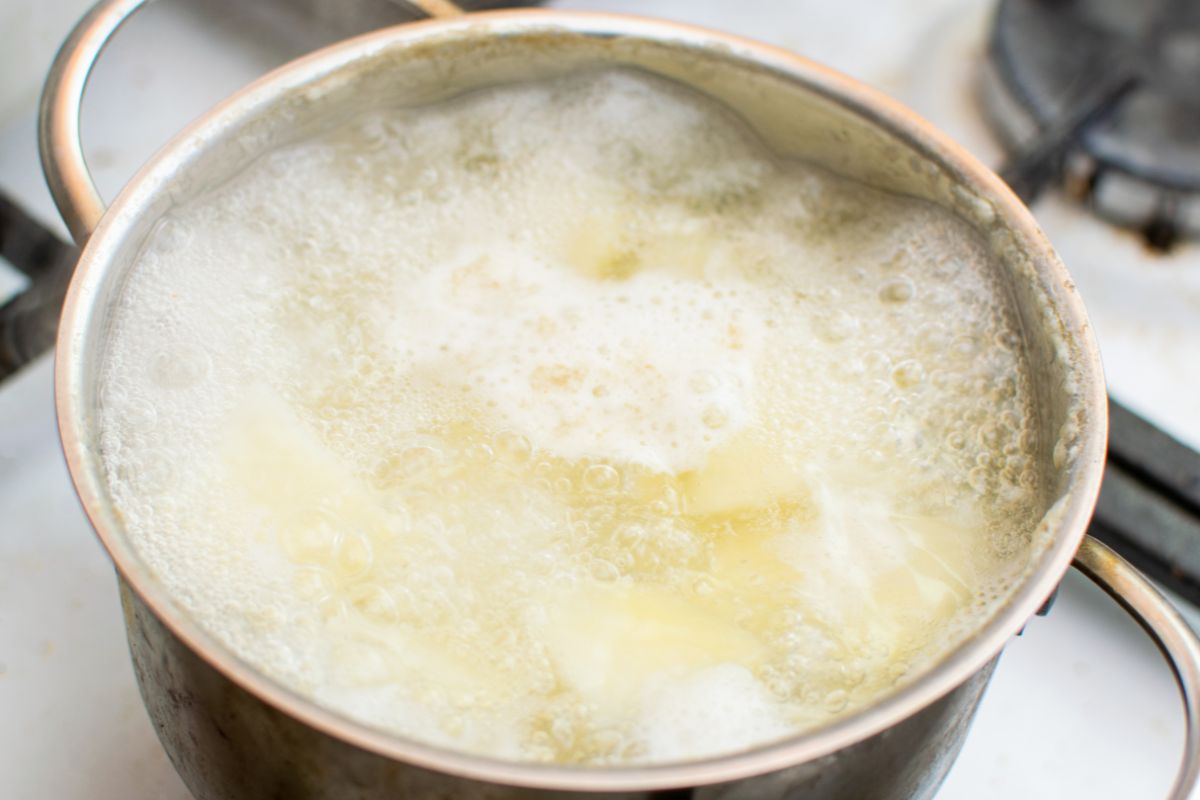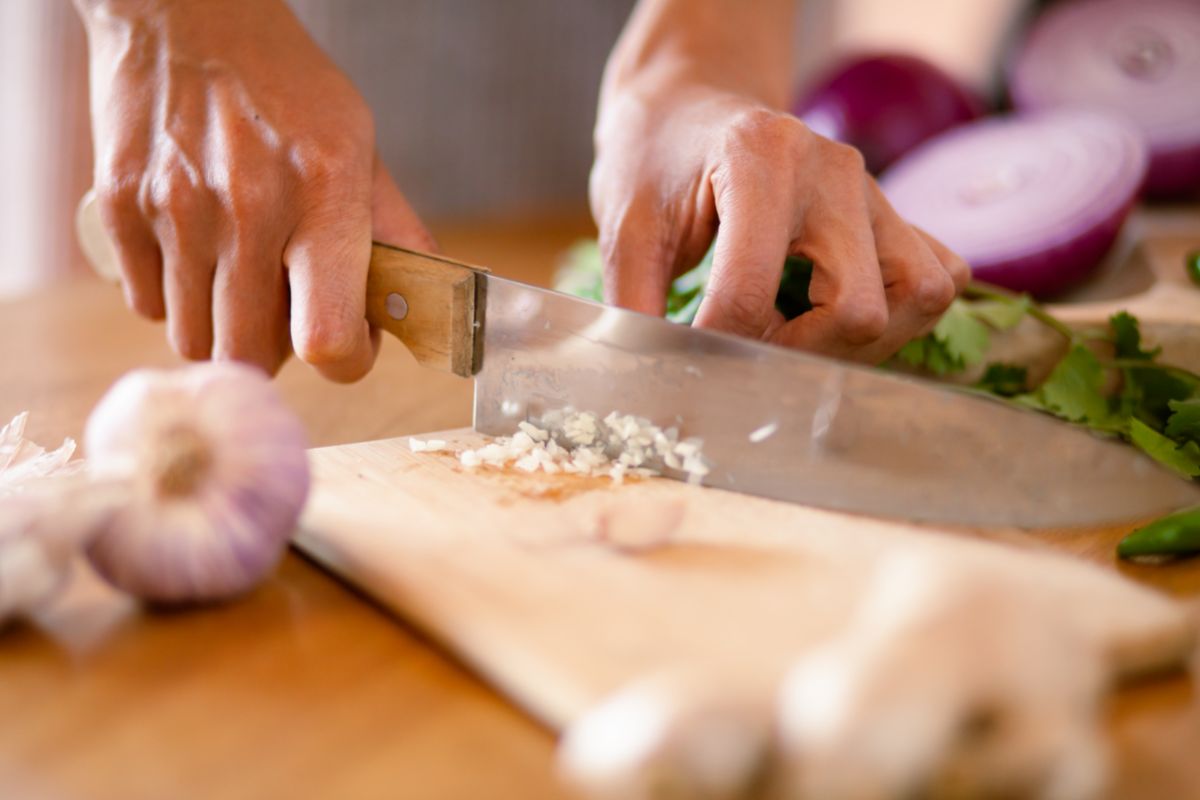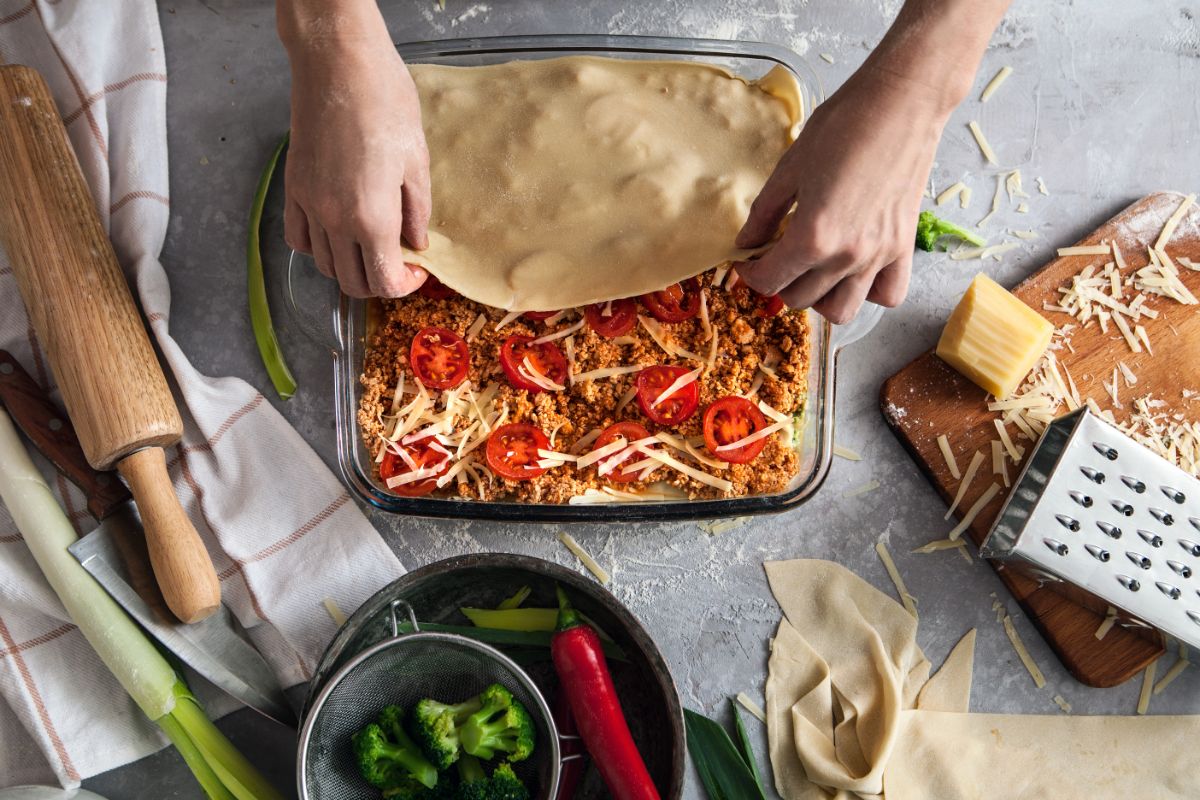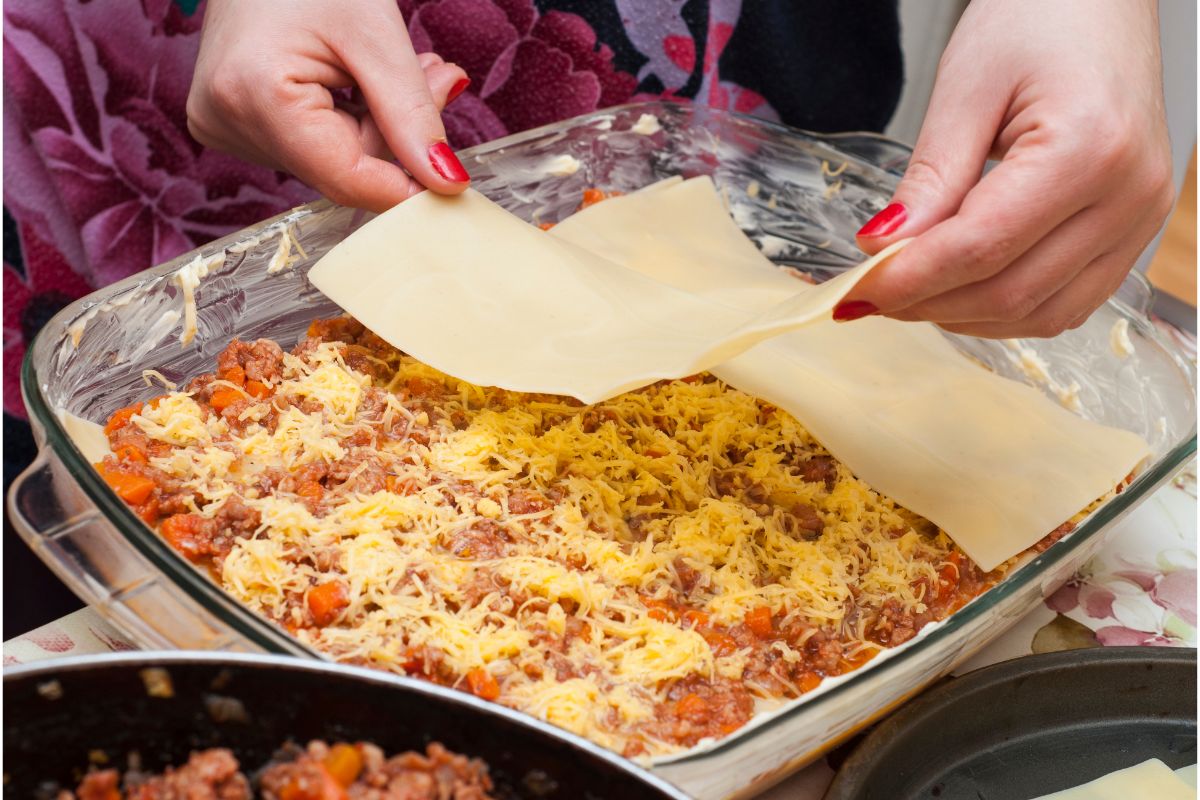Lasagna is a popular layered pasta dish enjoyed by many. When preparing to make your own lasagna at home, you may find yourself asking: what is the best way to layer lasagna? How many layers of noodles are in lasagna? What is the lasagna layer order? Although there is no standard number, most lasagne have three to four layers. However, feel free to add more.
How Do You Layer Lasagna?
Before you learn what the best way to layer lasagna is, you will need to prepare your ingredients and sauces before you begin your lasagna assembly. Begin by layering your tomato-based sauce on the bottom of your pan. Next, add a single layer of pasta sheets. Then, add another layer of pasta sheets, followed by a layer of white sauce.
Continue alternating the tomato sauce, lasagna sheets, and white sauce until the dish reaches the top, or your sauces run out!
Once you have your desired lasagna layers finish with a layer of either tomato-based sauce or white sauce – whichever you prefer. Then, add plenty of Parmigiano-Reggiano. Mozzarella is also a popular supplementary topping that creates a gorgeous, melted cheese layer on top. Read our article and find out The Secret to Grandma’s Best Lasagna Recipe.
How to Make Lasagne
There are many ways to make lasagne. This particular recipe will show you how to layer lasagna in a pan.
This dish is a cross between a completely homemade lasagna and one that includes pre-made components. You can always decide to use a store-bought tomato-based source if you don’t want to make your own from scratch. Here are all the ingredients you will need.
Pasta
- Salt
- Olive oil
- 0.99 lb (0.454 kg) of dried lasagne noodles
Meat sauce
- 1.3 lb (0.57 kg) of uncooked spicy pork or chicken sausage
- 0.99 lb (0.454 kg) of ground beef
- 1 large onion, thinly chopped
- 4 cloves of garlic, minced
- 31.76 oz (794 g) of plum tomatoes, with their juice
- 13.6 oz (340 g) of tomato paste
- 31.76 oz (794 g) of tomato sauce
- 1/2 teaspoon of freshly ground black pepper
- A large pinch of red pepper flakes is optional if you enjoy some spice
- 2 teaspoons of salt
Cheese Layer
- 17 oz (425 g) of ricotta cheese that has completely drained
- 2 large eggs for beating
- 1 cup of freshly grated Parmesan cheese
- 2 tablespoons of extra virgin olive oil
- About half a cup of fresh flat-leaf parsley leaves, thinly sliced
- 4 cups of freshly grated mozzarella cheese
Equipment You Will Need
- An extra-deep baking dish that is at least 115.83 in (297 cm)
- Oil the pan with olive oil or baking spray
- A large-sized spaghetti pot
- Kitchen towels for the pasta sheets
- A large-sized sauté pan or a large-sized saucepan
- A bowl medium in size
Instructions
The following instructions will inform you on how to layer lasagna in a pan and all the necessary steps to follow to make a delicious, deep-dished lasagne. That is bound to be enjoyed by anyone who tries this yummy authentic Italian layered lasagna.
Step 1
Preheat the oven to a temperature of 7,040 degrees Fahrenheit (220 degrees Celsius) and brush the baking pan liberally with olive oil. Putting oil in your pan will prevent your lasagna from sticking in the pan.
Step 2
Heat a large saucepan of water on high. Drizzle in a generous amount of olive oil and season with salt.
Step 3
Bring the water to a boil, then add the lasagne sheets and continue to a boil. Cook the lasagna until it is al dente (this means that the pasta will still be firm when biting into it).

Step 4
Drain the cooked noodles and spread them out on the pre-prepared kitchen towels. Make sure that the noodles spread gently to prevent any tearing of the noodles.
Step 5
Put a large saucepan on the oven top. Then, put the oven top on medium to high heat.
Step 6
You can use kitchen scissors to cut open the sausage casings and break up the sausage. Mix in the ground beef from the sausages, then add it all to the skillet.
Step 7
Continue to cook, making sure to stir constantly until you are sure that the beef thoroughly browns.
Step 8
In the meantime, while you wait, you can start to chop up your fresh ingredients. Start by delicately dicing the onion and garlic.

Step 9
Reduce the heat to medium, and then add the diced garlic and onion to the pan. Cook for another 10 minutes, stirring constantly.
Step 10
Remove the pan from the heat safely. Then, separate as much of the fat from the meat as possible.
Step 11
Return to the stovetop and stir in the tomato paste. Cook for a few minutes while mixing it into the meat.
Step 12
Mash the plum tomatoes before adding them, together with their juices, and the tomato sauce, to the meat. Bring to a simmer, stirring constantly. While you create the cheese layer of the lasagna, simmer for at least 15 minutes. Remove the sauce from the heat and whisk in a single teaspoon of salt as well as some freshly ground black pepper to your discretion.
Step 13
In a large mixing bowl, combine the ricotta, beaten eggs, 1/2 cup Parmesan cheese, one teaspoon salt, olive oil, and minced parsley.
Step 14
Count the pasta sheets to confirm they are four layers in total. It is ideal to begin and end with wider layers, so if you have fewer than 16 lasagna noodles, situate them in the top or bottom layers.

Step 15
Make sure you have one-third of the ricotta mixture. This mixture should then be spread on top of the lasagna.
Step 16
Separate roughly one-third of the beef sauce that you have made. Then spread it on top of the layer.
Step 17
Top with another three lasagna noodles and around one cup of grated mozzarella. Layer the ricotta, meat sauce, and cheese again. Repeat this process with three more noodles and another layer of meat, ricotta, and cheese.
Step 18
Finish by placing four noodles on top of the lasagna, one horizontally and four lengthwise. Top the noodles with any remaining mozzarella cheese and the remaining 1/2 cup Parmesan. At this stage, the lasagna can also refrigerate for up to two days. It can even be packaged tightly and frozen for up to 30 days if you would like.
Step 19
When you have completed assembling the lasagna, wrap it with aluminium foil. Be sure to wrap the lasagna loosely.
Step 20
Now that you have your lasagna nicely wrapped up, it’s time for the lasagna to go into the oven. Bake the lasagne for half an hour in the oven.
Step 21
Uncover the lasagna and bake for another 10 minutes. Then allow the lasagna to rest for a quarter of an hour before portioning and serving it to your dinner guests.

Chefs Note
You can prepare this lasagna a day ahead of time and store it in the refrigerator. Before baking, store the lasagna in a freezer. Allow the lasagna to defrost overnight in the fridge before baking, then bake as stated above.
If you don’t have the time to defrost the lasagna, lower the oven temperature by 2,240 degrees Fahrenheit (77 degrees Celsius) and bake for an additional 30 minutes, or until the middle is piping hot.
The Final Say
Overall, making lasagna from scratch can seem overwhelming and feel daunting. However, you should not feel discouraged because although the process of preparing lasagna may be time-consuming, the recipe is reasonably user-friendly. This is lovely because you do not need to be a professional cook to make and enjoy this popular dish.
This recipe tells you how many layers of noodles in lasagna you will need to make your lasagna dish, as well as teach you how to assemble lasagna appropriately. This authentic Italian lasagna dish is a must-try for all pasta lovers.

Community of passionate writers and content creators who share a love for Italian heritage, culture, travel, food, and the Italian-American community. Our mission is to celebrate Italy’s rich history and traditions and connect with others who share the same passion.

